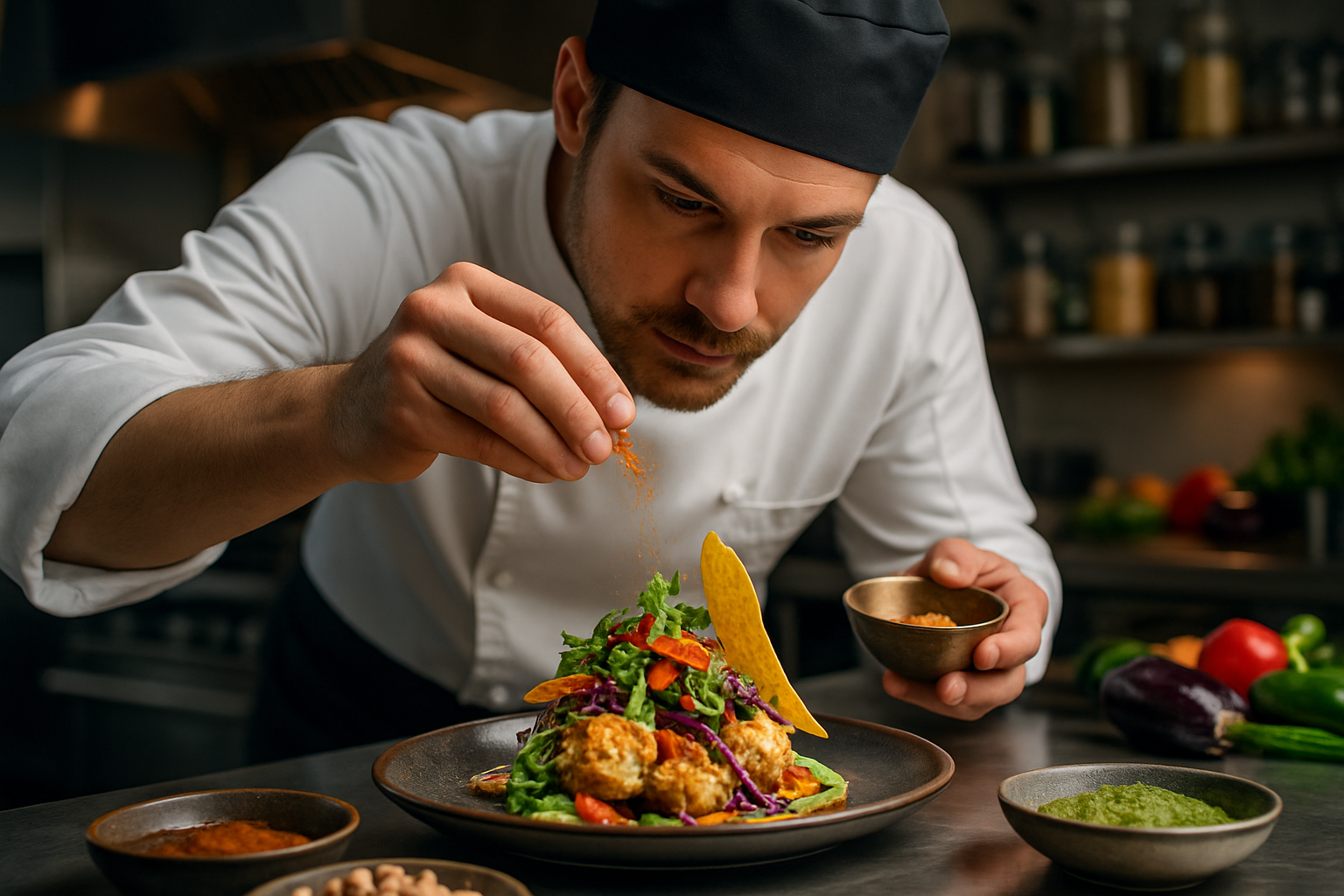Culinary Alchemy: Transforming Humble Ingredients into Gourmet Delights
Unlock the secrets of culinary transformation and elevate everyday ingredients to extraordinary heights. From simple pantry staples to forgotten produce, discover how innovative techniques and creative pairings can breathe new life into familiar flavors. Join us on a journey of gastronomic reinvention that will revolutionize your approach to cooking.

Elevating Pantry Staples to Gourmet Status
Your pantry is a treasure trove of culinary possibilities waiting to be explored. Take canned beans, for instance. While they’re often associated with quick, no-fuss meals, these legumes can be transformed into sophisticated dishes with a little creativity. Blend white beans with roasted garlic and herbs for a luxurious dip, or use black beans as a base for a rich, chocolatey brownie. Even the humble can of tuna can be elevated – mix it with diced apples, curry powder, and Greek yogurt for a unique twist on tuna salad. Another pantry hero is the often-overlooked can of chickpeas. Drain, rinse, and roast them with spices for a crunchy snack, or puree them with tahini and lemon for a silky hummus. The key is to think beyond the obvious and experiment with different flavor profiles and textures.
From Scraps to Scrumptious: Upcycling Food Waste
One of the most exciting frontiers in culinary alchemy is the transformation of food scraps into delectable dishes. This approach not only reduces waste but also challenges us to see the potential in every part of an ingredient. Vegetable peels and ends can be simmered into a flavorful stock, while overripe fruits can be blended into smoothies or baked into breads. Even leftover coffee grounds can find new life as a flavorful rub for meats. Embrace the concept of nose-to-tail or root-to-stem cooking, where every part of an animal or plant is utilized. Carrot tops can be turned into pesto, fish bones can become a rich broth, and fruit peels can be candied for a sweet treat. By viewing food waste as a resource rather than refuse, we open up a world of culinary possibilities while practicing sustainability.
The Magic of Fermentation and Preservation
Fermentation is a powerful tool in the culinary alchemist’s arsenal, capable of transforming simple ingredients into complex, flavorful creations. This ancient preservation technique not only extends the life of foods but also develops unique tastes and textures. Experiment with making your own kimchi, sauerkraut, or pickles – each batch will be a unique expression of the ingredients and environment. Kombucha, a fermented tea beverage, can be flavored with fruits and herbs for endless variations. Even humble milk can be transformed into tangy yogurt or creamy kefir. Beyond fermentation, other preservation methods like curing, smoking, and dehydrating can add depth and complexity to ingredients. Try your hand at making fruit leather from seasonal produce, or cure egg yolks for a umami-rich garnish.
Molecular Gastronomy: Science Meets Cuisine
For those ready to push the boundaries of culinary transformation, molecular gastronomy offers a playground of possibilities. This avant-garde approach applies scientific principles to cooking, resulting in dishes that challenge our perceptions of food. With a few specialized ingredients and techniques, you can create edible spheres that burst with flavor, turn liquids into powders, or make foams that capture the essence of ingredients. Experiment with techniques like spherification to create caviar-like beads from fruit juices, or use agar-agar to make unconventional jellies. Even without specialized equipment, you can dabble in molecular gastronomy at home. Try making a simple foam by blending fruit puree with lecithin, or create a dramatic “smoke” effect by infusing dishes with food-grade dry ice. The goal is to surprise and delight, turning the act of eating into a multi-sensory experience.
Useful Tips & Facts for Culinary Alchemy
• Always taste as you go – transformation often requires adjustments
• Invest in a good blender and food processor for texture manipulation
• Experiment with different cooking temperatures to alter flavors and textures
• Learn the basics of flavor pairing to create harmonious combinations
• Keep a culinary journal to track your experiments and successes
• Don’t be afraid to fail – some of the best discoveries come from mistakes
• Consider texture as much as flavor when transforming ingredients
• Use herbs and spices to completely change the profile of a dish
• Understand the science behind cooking for more predictable results
• Practice mindful eating to truly appreciate the transformations you create
In conclusion, culinary alchemy is about seeing the extraordinary potential in ordinary ingredients. By applying creativity, science, and a dash of daring, we can transform humble foods into gourmet experiences. This approach not only expands our culinary horizons but also encourages sustainability and reduces waste. As you embark on your own alchemical adventures in the kitchen, remember that the most important ingredients are curiosity and imagination. Let each meal be an opportunity to explore, create, and delight in the magic of transformation.





